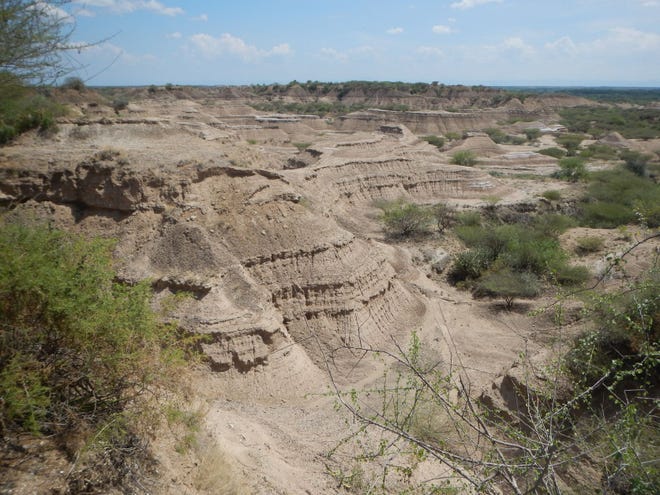Some of the oldest remains of modern humans in the world are much older than scientists thought.
The remains, known as Omo I, were found in southwest Ethiopia in the late 1960s. The bone and skull fragments researchers discovered were some of the oldest known remains of Homo sapiens.
Initial research suggested they were nearly 200,000 years old, but new research shows the remains are at least 230,000 years old. The peer-reviewed research was published in the journal Nature on Wednesday。
Over a four-year period, a team of international scientists attempted to date all of the major volcanic eruptions in the Ethiopian Rift in eastern Africa. Céline Vidal, a volcanologist from the University of Cambridge and lead author of the research, said the fossils were below a thick layer of volcanic ash, but the ash was “too fine-grained” to date with radiometric techniques. If the volcanic eruptions could be accurately dated, so would the remains.

The team took “fingerprints” from the site: rock samples from volcanic deposits broken down to sub-millimeter size.
“Each eruption has its own fingerprint – its own evolutionary story below the surface, which is determined by the pathway the magma followed,” Vidal said in a statement。 “Once you’ve crushed the rock, you free the minerals within, and then you can date them, and identify the chemical signature of the volcanic glass that holds the minerals together.”
Analysis revealed the samples to be related to the eruption of the Shala volcano about 250 miles away, which is now the deepest lake and the largest crater in Ethiopia, according to Oregon State University researchers。 The eruption happened 230,000 years ago.
Cave gives clues to humanity: 200,000-year-old remains of close relative to modern humans found in Siberia
‘Sea dragon’: Nature reserve workers discover fossil of ‘sea dragon,’ the largest found in England
Though signs of earlier forms of humans have been found in Africa, such as the 3.66 million-year-old footprints of two types of early humans, Aurélien Mounier from the Musée de l’Homme in Paris and co-author of the paper, said Omo I has “unequivocal modern human characteristics,” such as a tall, spherical cranium and chin.
There is uncertainty as to when modern humans appeared on Earth. Fossils found in the Sahara Desert in 2017 were more than 300,000 years old、but Mounier told Rueters the fossils “do not possess some of the key morphological features that define our species,” so there are questions whether they are linked to modern humans or another species related to humans.
“The new date estimate, de facto, makes it the oldest unchallenged Homo sapiens in Africa,” Mounier said.
Vidal said she was “really excited” to find out the remains are much older than thought – from the late Middle Pleistocene time period, before Homo sapiens began to spread out of Africa.
Although the findings in Ethiopia give the fossils an estimated age, it is possible the remains are much older than 230,000 years.
“Our forensic approach provides a new minimum age for Homo sapiens in eastern Africa, but the challenge still remains to provide a cap, a maximum age, for their emergence, which is widely believed to have taken place in this region,” 、 geochronologist at Cambridge and co-author. “It’s possible that new finds and new studies may extend the age of our species even further back in time.”
Follow Jordan Mendoza on Twitter: こんにちは。














+ There are no comments
Add yours